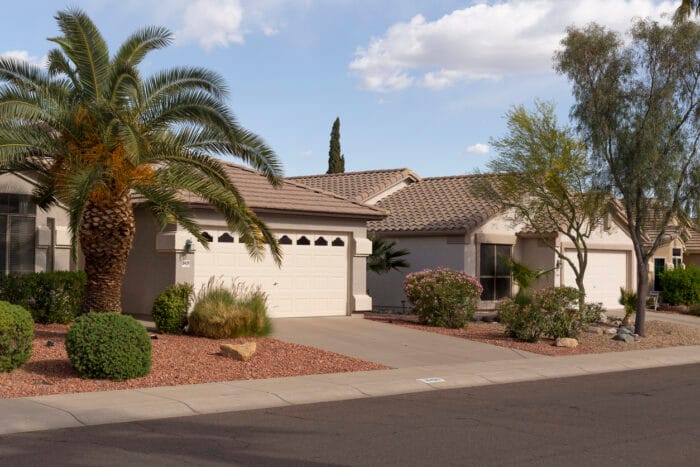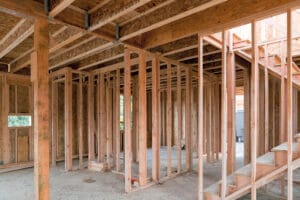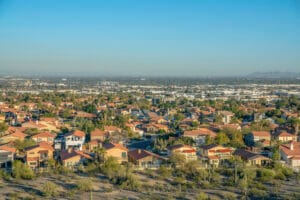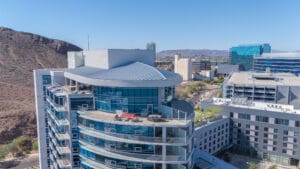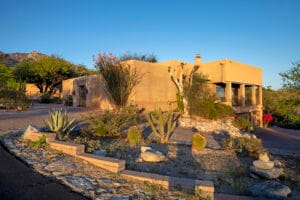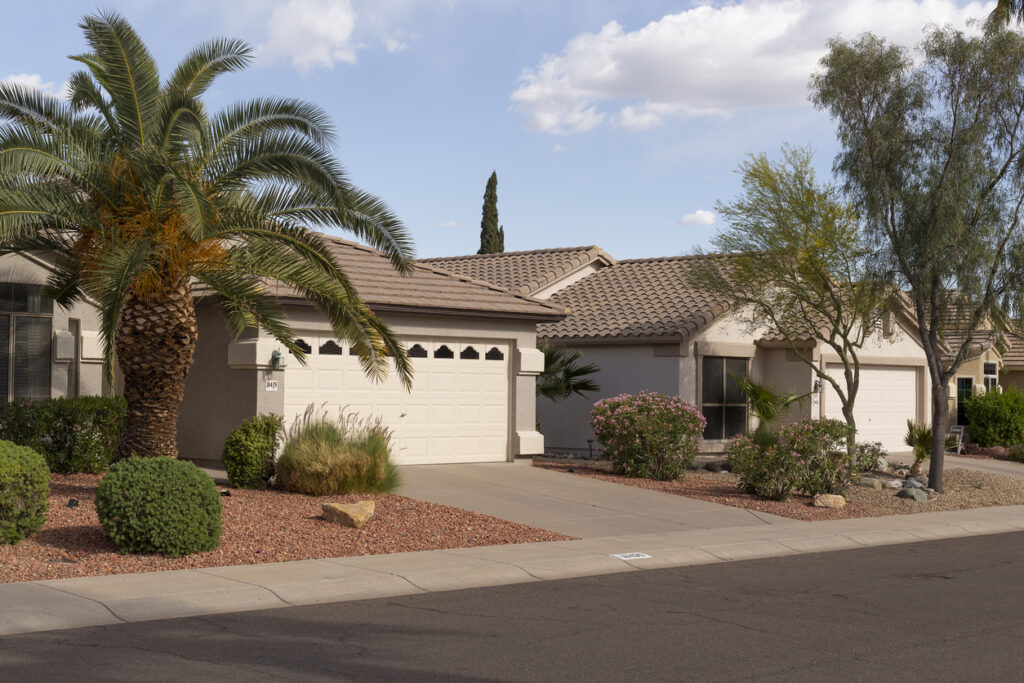Arizona’s rental property market offers incredible investment opportunities, but the state’s extreme climate poses unique challenges that can quickly erode your returns if left unaddressed. From scorching 115-degree summers to sudden monsoon downpours and the notorious expansive soil that plagues the Phoenix Valley, Arizona rental properties face environmental stressors unlike anywhere else in the country.
Whether you manage a single rental home in Gilbert or oversee an entire portfolio across Scottsdale, Mesa, and Phoenix, understanding how to protect your investment isn’t just smart, it’s essential for long-term profitability. For first-time homebuyers and new property investors, partnering with seasoned experts like Real Estate Brokers of Arizona ensures you navigate the market strategically, from purchase to proactive property management.
With over four decades of experience evaluating Arizona properties, Schembri Engineers has seen firsthand how proactive maintenance can mean the difference between a 20-year roof and one that fails in 12, or a foundation that settles gracefully versus one requiring $30,000 in emergency repairs.
Why Arizona Rental Property Maintenance Is Different
Arizona’s climate creates a perfect storm of conditions that accelerate wear and tear on residential properties:
- Extreme Temperature Swings: Daily variations of 30-40 degrees cause continuous expansion and contraction in building materials. Wood framing cracks, stucco fissures, and roof trusses can warp under the relentless heat.
- Expansive Clay Soil: The Phoenix Valley sits on highly reactive clay soil that expands when wet and shrinks during dry periods, stressing foundations and causing cracks and settlement.
- Monsoon Season Challenges: Sudden torrential rains from June through September expose drainage weaknesses and foundation vulnerabilities.
- Intense UV Exposure: High UV radiation levels degrade roofing materials, exterior paint, window seals, and exposed rubber or plastic components.
For property managers and landlords, including first-time investors, these factors translate directly into maintenance costs. The question isn’t whether your rental properties will experience these issues—it’s whether you’ll address them proactively or reactively.
Foundation and Structural: Your Most Critical Investment
Foundation problems are the single most expensive repair category for Arizona rental properties, often costing $15,000–$50,000 when major intervention becomes necessary. Yet most foundation issues start small and remain manageable if caught early.
Annual Foundation Inspection Checklist
Walk your property’s perimeter every spring and fall, documenting changes:
- Exterior Cracks: Hairline cracks under 1/8 inch are normal. Diagonal or stair-step cracks wider than 1/4 inch indicate active settlement.
- Soil Contact and Grading: Ensure soil slopes away from the foundation at a 5% grade for the first 10 feet. Avoid soil buildup against stucco or siding.
- Gaps and Separation: Check for gaps between foundation and soil, walls and ceilings, or garage slab connections.
- Window and Door Operation: Sticking doors or gaps indicate structural movement before visible cracks appear.
Moisture Management: The Foundation’s Best Friend
Arizona’s soil creates a paradox: too much moisture causes expansion and heaving, too little leads to shrinkage and settlement. Maintaining consistent moisture levels around your foundation is key.
Pro Tips for Rental Properties:
- Establish a Watering Schedule: During dry months, water around the foundation perimeter 1–2 times per week.
- Maintain Proper Drainage: Clean gutters and downspouts twice yearly, extending them at least 6 feet from the foundation.
- Monitor Landscaping: Keep large shrubs and trees at least 10 feet from structures and avoid planter beds that trap water against foundation walls.
When to Call a Structural Engineer
Some foundation issues require professional evaluation. Working with partners like Phoenix Property Management professionals can alert you when engineering assessment is necessary, such as:
- Cracks exceeding 1/4 inch or growing over months
- Multiple doors/windows sticking
- Sloped or uneven floors
- Gaps between walls and ceilings
- Property renovations affecting load-bearing walls
A structural evaluation from a licensed engineer ensures documentation that protects both you and your tenants, establishes baseline conditions for insurance, and identifies problems while still manageable.
For first-time homebuyers looking to invest, Schembri Engineers’ engineering and design services provide professional guidance to prevent costly surprises down the road.
Roof Systems: Protecting Your Largest Surface Area
Arizona’s intense sun and monsoon weather make roofing one of the most critical and expensive components of rental property maintenance. While tile roofing can last 50+ years, underlayment, flashing, and structural components require regular attention.
Seasonal Roof Maintenance Schedule
Spring (March–April): Clear debris, check tiles, inspect vents, chimneys, and attic ventilation.
Pre-Monsoon (May–June): Inspect drains, flashing, and attic for water intrusion.
Fall (October–November): Document tile damage, inspect exposed wood, and ensure attic ventilation.
Roof Truss Monitoring
Cracks longer than 6 inches, separations at gusset plates, or sagging beams require a licensed engineer evaluation. Roof trusses are engineered systems—incorrect repairs can compromise structural integrity.
HVAC Systems: Arizona’s Life Safety Necessity
Proper HVAC maintenance extends system life from 10–12 to 15–18 years. Preventive care includes:
- Monthly: Replace filters, check registers, inspect outdoor condensers.
- Quarterly: Professional tune-ups before peak heat, mid-summer check, and fall evaluation.
- Ductwork Inspection: Every 5 years, check for disconnected ducts, insulation issues, and return air leaks.
Investing in HVAC longevity protects tenants and prevents emergency costs, especially during scorching summer months.
Plumbing and Water Management
Arizona’s hard water accelerates plumbing failure. Regular maintenance includes:
- Flushing water heaters annually
- Inspecting anode rods and temperature/pressure valves
- Checking for leaks in interior and exterior systems
Consider installing whole-house water softeners or leak detection systems to prevent costly emergencies.
Exterior Maintenance: Protecting Against Sun and Weather
Arizona’s extreme conditions necessitate careful exterior upkeep:
- Stucco & Paint: Inspect annually, repair cracks, repaint with UV-resistant paint every 5–10 years.
- Windows & Doors: Replace weather stripping, re-caulk, lubricate moving parts every 3–5 years.
- Concrete & Hardscape: Seal concrete, fill cracks >1/4 inch, monitor settlement, and pressure wash annually.
Creating a Preventive Maintenance Program
Monthly: Exterior check, tenant compliance, obvious damage
Quarterly: HVAC service, pest control, plumbing fixture checks
Semi-Annual: Foundation walk, roof assessment, attic inspection
Annual: Water heater, full HVAC, irrigation, exterior paint, appliances
ROI of Proactive Maintenance
Regular maintenance dramatically reduces emergency costs:
- Annual foundation watering: $200–$400 vs. emergency repair: $15,000–$50,000
- Bi-annual HVAC service: $300–$500 vs. replacement in summer: $8,000–$12,000
- Regular roof inspection: $200–$500 vs. water damage repair: $10,000–$30,000
Beyond cost savings, proactive care improves tenant satisfaction, reduces turnover, and increases property value.
Conclusion: Protecting Your Arizona Investment
Arizona rental properties thrive when they receive consistent, informed care. From foundations to roofs, HVAC, plumbing, and exterior finishes, prevention saves thousands, safeguards tenants, and maximizes ROI.
Whether you’re a first-time homebuyer preparing to invest or a seasoned landlord, if you’re Getting Ready To Buy Phoenix Real Estate and licensed engineers ensure your rental properties remain profitable for decades. For professional inspections, evaluations, and engineering oversight, Schembri Engineers’ engineering and design services provide the expertise you need to protect your investment from Arizona’s unique challenges.
